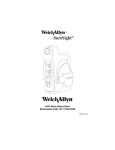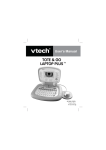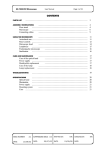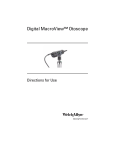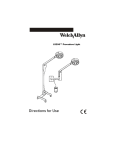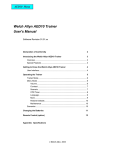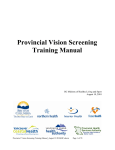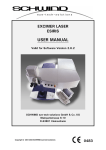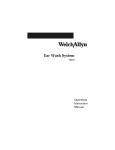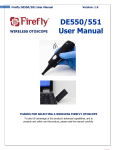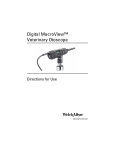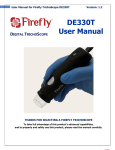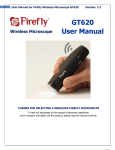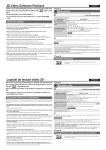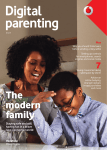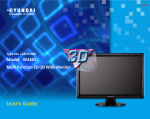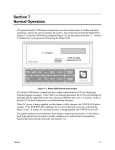Download Welch Allyn SureSight - 703692
Transcript
4341 State Street Road Skaneateles Falls, NY 13153-0220 719919 Rev. A Table of Contents Warnings & Symbols . . . . . . . . . . . . . . . . . . . . . . . . . . . . . . 1 Mises en garde et symboles . . . . . . . . . . . . . . . . . . . . . . . . 4 Technical Specifications . . . . . . . . . . . . . . . . . . . . . . . . . . . . 8 Function and Intended Application . . . . . . . . . . . . . . . . . . . 10 Vision Disorders and Amblyopia . . . . . . . . . . . . . . . . . . 10 SureSight™ . . . . . . . . . . . . . . . . . . . . . . . . . . . . . . . . . . 11 SureSight Display, Controls, and Features . . . . . . . . . . . . . 12 First Time Set-Up . . . . . . . . . . . . . . . . . . . . . . . . . . . . . . . . Stand. . . . . . . . . . . . . . . . . . . . . . . . . . . . . . . . . . . . . . . Controls. . . . . . . . . . . . . . . . . . . . . . . . . . . . . . . . . . . . . Pre-test Set-up: . . . . . . . . . . . . . . . . . . . . . . . . . . . . . . . Test Procedure:. . . . . . . . . . . . . . . . . . . . . . . . . . . . . . . Important Operating Tips . . . . . . . . . . . . . . . . . . . . . . . Helpful hints for testing pre-schoolers . . . . . . . . . . . . . Results . . . . . . . . . . . . . . . . . . . . . . . . . . . . . . . . . . . . . Approximate Relationship of Sphere to Visual Acuity. . Referral Criteria . . . . . . . . . . . . . . . . . . . . . . . . . . . . . . . Plus or Minus Cylinder Convention. . . . . . . . . . . . . . . . Updating SureSight Software . . . . . . . . . . . . . . . . . . . . 14 14 15 15 16 17 17 18 19 19 21 21 Replacement and Recycling of Battery . . . . . . . . . . . . . . . Replacing the Battery . . . . . . . . . . . . . . . . . . . . . . . . . . Charging . . . . . . . . . . . . . . . . . . . . . . . . . . . . . . . . . . . . Recycling Lithium Ion Battery . . . . . . . . . . . . . . . . . . . . 22 22 22 23 Hand Strap Replacement . . . . . . . . . . . . . . . . . . . . . . . . . . 24 Cleaning and Sterilization of the SureSight . . . . . . . . . . . . 24 Service, Calibration, and Warranty Information . . . . . . . . . Warranty . . . . . . . . . . . . . . . . . . . . . . . . . . . . . . . . . . . . Service and Warranty . . . . . . . . . . . . . . . . . . . . . . . . . . SureSight Rechargeable Battery . . . . . . . . . . . . . . . . . . Calibration and Maintenance. . . . . . . . . . . . . . . . . . . . . 25 25 26 26 26 Appendix . . . . . . . . . . . . . . . . . . . . . . . . . . . . . . . . . . . . . . 27 Glossary of Terms. . . . . . . . . . . . . . . . . . . . . . . . . . . . . 27 Guidance and Manufacturer’s Declarations . . . . . . . . . . . . 27 Emissions and Immunity Information . . . . . . . . . . . . . . 27 Warnings & Symbols ATTENTION: Refer to the operating instructions. This symbol ( ) is intended to advise the user of the presence of important operating or maintenance instructions in the documents accompanying the instrument. WARNING: Do not modify this equipment. Any modification of this equipment can lead to patient injury. Any modification of this equipment voids the product warranty. Service or Repair to be performed by qualified, authorized personnel only. There are no user serviceable parts inside the instrument. Opening this device can expose the user to harmful invisible laser radiation. Use only with Welch Allyn 710 series chargers. Replacement parts and accessories - Use only approved replacement parts and accessories specified in this manual. Refer to the maintenance section of this manual for more information. Do not sterilize the instrument or any of its components. Use only with IEC 60601-1 approved printers, or keep printer out of patient vicinity. Disassembly of instrument beyond the extent described in this manual will void the warranty. Refer all servicing to Welch Allyn or a Welch Allyn authorized service representative listed in the Servicing, Calibration and Warranty Information section. Opening this device can expose the user to harmful invisible laser radiation. Only the battery cover is to be opened by the user. As a precaution, avoid using this product in close proximity to other equipment. The product complies with current required standards for electromagnetic interference and should not present problems to other equipment or be affected by other devices. 1 Battery replacement: Replace with Welch Allyn model # 72420 Lithium Ion battery only. Do not attempt to disassemble or modify the battery pack. There are no user serviceable parts inside pack.Do not attempt to directly solder to the battery pack. Do not attempt to connect the positive and negative battery terminals to each other, nor to any other device. “Caution” - use of controls or adjustments or performance of procedures other than those specified herein may result in hazardous radiation exposure. Product contains two internal apertures within the laser tube assembly. These are not user replaceable or user adjustable. DO NOT attempt to make any aperture adjustments to this product. Do not operate, charge, leave or discard battery pack in any environment where it may exceed 0°C to 40°C. Do not immerse the battery pack in water. Do not attempt to open or pierce the battery pack. Do not strike or throw the battery pack. Do not use a battery pack which appears to be deformed, leaking, corroded, or is otherwise irregular. If electrolyte leaking from battery contacts your skin or eyes, rinse with running water and immediately seek medical attention. If the device will be unused for several months or longer, remove the battery prior to storing the device. IPXØ: Not protected against the ingress of water. Not for use in the presence of flammable anesthetics. 2 Double Insulated. Australia EMC Framework Compliance The CE mark on this device indicates that it has been tested and conforms to the provisions noted within the 93/42/EEC Medical Device Directive. 3 Mises en garde et symboles ATTENTION : Consulter le mode d'emploi. Ce symbole ( ) signale à l’utilisateur la présence de renseignements importants relatifs au fonctionnement ou à l'entretien de l'instrument dans les documents qui l'accompagnent. AVERTISSEMENT : Ne modifiez pas l’équipement. Toute modification de l’équipement peut être source de blessures au patient. Toute modification de l’équipement annule la garantie produit. L'entretien ou la réparation ne doivent être effectués que par un personnel compétent habilité. Cet instrument ne contient pas de pièces réparables par l'utilisateur. L'ouverture de ce dispositif risque d'exposer l'utilisateur à un rayonnement laser invisible nocif. Utiliser uniquement avec des chargeurs Welch Allyn série 710. Pièces et accessoires de rechange – Utiliser uniquement les pièces et accessoires de rechange autorisés spécifiés dans ce manuel. Consulter la section Entretien de ce manuel pour des informations supplémentaires. Ne pas stériliser l'instrument ni aucun de ses composants. Utiliser uniquement avec une imprimante conforme à la norme CEI 60601-1, ou utiliser l'imprimante à distance du patient. Un démontage de l'instrument au-delà des recommandations de ce manuel annule la garantie. Confier toutes réparations à Welch Allyn ou à un représentant agréé par Welch Allyn listé dans la section Informations sur les réparations, l'étalonnage et la garantie. L'ouverture de ce dispositif risque d'exposer l'utilisateur à un rayonnement laser invisible nocif. Seul le couvercle de la batterie peut être ouvert par l'utilisateur. 4 Avertissement : À titre de précaution, éviter d’utiliser le produit en proximité étroite avec d’autres appareils. Le produit est conforme aux normes actuelles en matière d’interférences électromagnétiques et ne devrait pas causer de problème à d’autres appareils ni être affecté par leur fonctionnement. Remplacement de la batterie : Remplacer uniquement par une batterie au lithium Welch Allyn modèle no 72420. Ne pas essayer de démonter ou de modifier le bloc-batterie. Il ne contient pas de pièces réparables par l'utilisateur. Ne pas essayer de souder directement sur le bloc-batterie. Ne pas essayer de relier les bornes positive et négative l'une à l'autre, ou à d'autres dispositifs. Attention : Des procédures de contrôle, de réglage ou de performance autres que celles qui sont spécifiées dans cette notice peuvent entraîner une exposition dangereuse au rayonnement. Le produit comprend deux ouvertures internes à l’intérieur du tube laser. L’utilisateur ne doit ni les ajuster, ni les remplacer. NE JAMAIS essayer d’ajuster une ouverture sur ce produit. Ne pas activer, charger, laisser ou jeter le bloc-batterie à un endroit où la température ambiante est inférieure à 0° C ou supérieure à 40° C. Ne pas immerger le bloc-batterie dans l'eau. Ne pas essayer d'ouvrir ou de percer le bloc-batterie. Ne pas frapper ni lancer le bloc-batterie. 5 Ne pas utiliser un bloc-batterie qui semble fuir ou être déformé, corrodé ou anormal. En cas de contact cutané ou oculaire avec une fuite d'électrolytes de la batterie, rincer à l'eau courante et consulter immédiatement un médecin. Si l’opérateur prévoit de ne pas utiliser l’appareil pendant plusieurs mois, voire plus, retirer la batterie avant de stocker l’appareil. IPXØ : Non protégé contre l’infiltration d'eau. Ne pas utiliser en présence d'anesthésiques inflammables. Double isolation. Obedece la norma australiana EMC Framework La marque CE appliquée sur ce dispositif indique qu'il a été testé et déclaré conforme aux dispositions de la directive 93/42 de la CEE sur les appareils médicaux. Authorized European Representative Address: Regulatory Affairs Representative Welch Allyn, Limited Navan Business Park Dublin Road Navan, County Meath, Republic of Ireland 6 Note: This product contains no hazardous materials. Its disposal will not contaminate or harm the environment, or present any risk to individuals disposing of the product. As a precaution, it is recommended you contact your local disposal and/or recycling authority for information regarding the disposal of the equipment. 7 Technical Specifications Technology: Welch Allyn proprietary autorefractor hardware/ algorithm Working distance: 14 inches (35 cm.) Distance detection: Automatic, with audible and visual cues Eyepiece: Illuminated target for easy aiming Data acquisition time: 2.4s/eye Data acquisition: Measures and averages 5 to 8 readings/eye Measurement Range: Sphere: +5.5 to -5.0 Diopters Cylinder: +/- 3 Diopters Reliability measure: Indicates number of and variation among measurements for the given eye Diopter display: 1/8 or 1/4 diopter increments Axis: 1° increments Stand: Compact charger and SureSight storage Weight: Approximately 2.0 lbs. (0.9 Kg.) Dimensions: 6.5” x 7.75” x 2” Interfaces: Remote infrared link to thermal printer. RS-232 interface for IBM compatible PC for future software upgrades/data transfer to electronic medical records. Laser safety: Class 1 Laser Product per CDRH 21CFR 1040.10 and 1040.11, IEC 60825-1:2001 The maximum output of the laser radiation not to exceed 33 W at a wavelength of 785 nm. 8 Patents: US 6,007,204 and Des. 413,979 International Patents Pending Office illumination: Not for use in direct sunlight. Indoor operation only. Materials: This product is latex free. Safety, EMC, and Regulatory Compliance: CAN/CSA C22.2 No. 601.1 CAN/CSA C22.2 No. 601.1.2 CAN/CSA C22.2 No. 601.1.4 IEC/EN 60601-1 IEC/EN 60601-1-2 IEC/EN 60601-1-4 ANSI/AAMI ES60601-1 Environmental Specifications Transport/Storage: -20°C~49°C, 10%(100% R.H. Max, 500hPa 1060hPa Altitude Operating: 10°C~30°C, 30%(75% R.H. Max, 500hPa - 1060hPa Altitude Battery Specifications Battery voltage: 7.2v nominal (Lithium Ion) Battery life: More than 3 hours of continuous usage Low-Battery warning: Indicates 10 - 15 minutes usage remains Classifications Protection against electric shock: Class II equipment and internally powered. Mode of operation: Continuous use Method of sterilization: Refer to Cleaning and Sterilization of the SureSight 9 Function and Intended Application Thank you for purchasing the Welch Allyn SureSight™ Vision Screener. Please read and follow the instructions found in this manual before using your new Vision Screener to ensure accurate and reliable service. Vision Disorders and Amblyopia Amblyopia (lazy eye) is the leading cause of monocular blindness in North America for those under 70. However, if risk factors are detected by age 4, 95% of patients can have their vision saved and avoid the lifelong effects of amblyopia, which may include a dramatically higher chance of loss of sight in the other eye, learning delays, and limitation of career choices. Two-thirds of children with amblyopic risk factors have refractive error (when the eye’s optics fail to clearly focus images on the retina). These include anisometropia (unequal optical power of the two eyes), myopia and hyperopia (near- and far-sightedness), and astigmatism (asymmetry of focus). Furthermore, 20% of teenagers suffer from a refractive error that requires corrective lenses that can affect educational development when untreated. The American Academy of Pediatrics, Family Practice, Ophthalmology, and Optometry all advocate pre-school vision screening, especially a key check of children aged 3 to 4. The latest research also indicates that it is a good idea to check refraction in infants - and to begin treatment by age one. Early detection reduces treatment time and expense and improves outcomes. Traditionally, pediatricians and family physicians use visual acuity (eye) charts to screen for refractive vision problems. Unfortunately, acuity testing of preschoolers suffers from low compliance, poor specificity (false positives), and poor sensitivity (false negatives). 10 SureSight™ That’s why Welch Allyn created SureSight™, the first objective, accurate vision test that ensures reliable early detection of refractive error, the primary vision disorder in children. Early detection improves outcomes and reduces treatment duration. The handheld SureSight vision screener addresses the problems associated with eye chart acuity screenings - and it’s effective anywhere in the office or offsite. And since minimal patient interaction is required, SureSight can be used for screening infants or handicapped patients. SureSight can also automatically test adults. With SureSight you can finally screen for serious vision problems - at well child visits or anytime - efficiently and effectively. 11 SureSight Display, Controls, and Features Peephole with crosshair target for aiming Reliability measure “Left” eye field “Right” eye field Sphere (see glossary) Cylinder (see glossary) Self-adjusting hand strap Difference between the eyes Child/adult calibration Start Button Print and left/ right toggle 12 Charging Jack Receptacle Battery Compartment Fixation LEDs Distance Sensor IR link to printer 13 Receptacle for RS232 Connection First Time Set-Up Stand • Insert right angle connector into stand • Optional: Two strips of hook and loop fasteners are provided on the stand. Attach mating strips to countertop or “home” location of the stand. For best results, clean surface and allow to dry before adhering. Hook and loop fasteners keep stand firmly in place for use, while allowing it to be removed as needed for offsite screenings. • Insert battery: 1) Open the battery cover located on the underside of the unit by sliding it in the direction indicated by the arrow and lifting out. 2) Insert the new battery into the compartment in the direction of the arrow on the battery itself, so that the terminal end enters the compartment first. If necessary, rotate the lever obstructing the compartment in a clockwise direction until the compartment is unobstructed. NOTE: Insert the battery only as directed. Failure to do so will prevent the instrument from functioning. 3) While pushing in on the battery, rotate the lever in a counter-clockwise direction until it covers the battery. 4) Replace the cover by lightly pushing in on the raised end until it is level and sliding the cover in the opposite direction of the arrow until it locks into place. 14 Controls The buttons on the back of the instrument function as follows: Left/Right Toggle & Print Clear and Child/Adult Calibration • Selects single eye to re-test or switches back to regular test. • Clears readings • Prints results (hold button down while aiming patient side of SureSight at printer until you hear “tah-dah” • Changes child/adult (hold down) “GO” Button • Unit on: starts test • Unit off: recalls old readings The instrument will turn off when unused for 1 minute. Any button pressed on the SureSight will bring up results. Pre-test Set-up: • Push any button to turn the unit on. • Position the patient so that the test can be conducted level with, and square to, patient’s eyes. • Choose the appropriate calibration using the child/adult button (child mode for 6 yr. and under). Hold button until you hear a double beep and see the desired icon on the LCD. • Explain the test procedure to the patient: • • “Now I will check your eyes. You will see a red light in the middle of the blinking green lights.” Position yourself at eye-level and square with the face of the patient. 15 Test Procedure: • Push the “GO” button on the unit • Check that the patient is fixated correctly throughout the test. • Position the unit at the correct distance from the patient: • • When the unit is too far away, you will hear slow, low-pitched beeps. •••• Slowly move closer. At the correct distance (14”), you will hear a steady, low tone. ——— • • When the unit is too close, you will hear quick, high-pitched beeps. …… • The crosshair will flash in synch with the tones. Look through the peephole and align the crosshair on the pupil of the patient’s right eye. While the unit is acquiring data, you will hear a very highpitched chirping sound over the steady low tone. ° ° ° ° ° • If you are not acquiring data (steady tone without acquiring data chirps): • • Scan around the pupil in an outward-moving spiral until chirps begin, then hold this location. • Ask the patient if they can see the red light. When the test of the right eye is complete, you will hear the “tah-dah” sound. (Testing resumes after 1 second, so you do not need to press any buttons for the left eye test.) • Without changing position, rotate the unit to the left eye and align the crosshair over the pupil. Repeat test. • At the end of the test, you will hear the “tah-dah” sound again. • If the unit has not gathered enough good readings from either eye, you will hear 5 tones when the test stops. - - - - - You must re-test that eye. • To stop a test at any time, hold any button until 5 tones sound. 16 Important Operating Tips To insure accurate results and quick tests: • Ambient Lighting: Don’t perform by uncovered windows Dimmed light can help for adults w/small pupils • Too dim can make it harder to find the pupil for those with dark eyes. • Entry Angle Position unit straight and level with patient Rotate unit to test left eye • Fixation: “Look at the red light” Remind patient and monitor fixation • Correct Distance/Not Taking Readings? Are you square and level? Scan around the pupil Ask patient if they see the red light Helpful hints for testing pre-schoolers • Helpful phrases that will grab the child’s attention. “look into the video camera while I take a movie of you” “look in the green circle at the red dot inside and you will hear a little birdie chirp” “look at the red dot inside the flashing green lights and tell me when it changes color” • Helpful tips to keeping a child still while administering the test. have child sit in his/her parent’s lap have child lie down 17 Sphere Reliability Number Cylinder Difference Child/Adult Mode Results Reliability Number indicates the number of good readings obtained and their consistency, based on a 1 to 9 scale (higher numbers are better). • >6 is typically acceptable $ • 5 is marginal / repeat the test if possible • <4 is poor / repetition of the test is necessary $ If the patient did not appear to fixate on the unit during data acquisition, repeat the test. S is the sphere, or power of the eye measured in diopters. Negative numbers indicate myopia (near-sightedness), positive numbers indicate hyperopia (farsightedness). C is the cylinder, a measure of astigmatism, or irregular focus of the eye. D is the difference in the mean spherical power between the two eyes (displayed in child mode only). * An asterisk on a reading in child mode indicates it is in pre-school referral range. A +9.99 or -9.99 indicates a reading outside the unit’s measurement range. 18 Referral Criteria 3-5 years* Sphere <-1.0 or >+4.0 Cylinder <-1.5 Difference >3.0 Readings outside the normal limits should be confirmed prior to referral. It is recommended that referral criteria be agreed upon between you and the eye care specialist receiving your referrals. With adults, it is suggested that the eye chart be used to confirm any apparent reading outside the normal limits. 19 • S – Sphere: Negative numbers are representative of myopia, or nearsightedness. Myopia is when distant images are blurry resulting from too much focusing power in the lens and cornea (i.e., the eye is too long). The light rays focus the image in front of the retina rather than at the retina. Positive numbers indicate hyperopia, or far-sightedness. Hyperopia is a condition in which blurred vision occurs at a close distance due to the rays of light converging on the retina short of the focal length at which they would be in focus. Causes also may include a weakness in the ability of the lens to focus, particularly at closer distances. • The ‘C’ displayed represent the cylinder, which is a measure of astigmatism, or asymmetry of focus. Astigmatism is a refractive error due to an uneven curvature of the cornea, blurring some of what the person sees. An astigmatic eye typically has areas of the cornea that are steeper or flatter than normal, which produces distorted vision. • The ‘D’ found under the left eye measurements indicate the difference in power between the two eyes. This is only displayed when the unit is in child calibration. This difference is mean sphere (D=S+½C) computed taking into account both the sphere and cylinder reading. It will typically be different than the algebraic difference between spheres. 1 Peter’s H.G.,“Peter’s Multiple Tables,” Borish Clinical Refraction, Vol., 1, 3 rd Edition, p. 371 20 Plus or Minus Cylinder Convention The Suresight has been pre-set in the minus cylinder convention. If you wish to change your unit to the plus convention: 1) Open the battery cover located on the underside of the unit by sliding it in the direction indicated by the arrow and lift up. 2) Rotate the lever holding the battery in and lift the battery from its compartment. 3) View the DIP switches inside the battery compartment located on the button side of the unit. 4) Using tweezers or another appropriate tool, push the first switch (located on the side of the unit with the handstrap) down towards the top of the SureSight. Updating SureSight Software If it is necessary or desired to update the unit software: 1) Connect the cable supplied with the software disk to a PC (IBM compatible, 486 processor, Windows 3.1 or higher) RS232 port. 2) Connect the other end of the cable to the RS232 port on the bottom of the SureSight (when SureSight is powered down). 3) Insert floppy disk into PC’s 3.5” floppy disk drive. 4) Run a:\setup to begin update. 5) Follow the prompts displayed on the PC. 6) View the DIP switches inside the battery compartment located on the button side of the unit. 7) Using tweezers or another appropriate tool, pull the third switch (third from side of SureSight with the handstrap) up towards the bottom of the SureSight. 21 Replacement and Recycling of Battery Replacing the Battery 1) Open the battery cover located on the underside of the unit by sliding it in the direction indicated by the arrow and lifting out. 2) Rotate the lever holding the battery in clockwise direction until the battery is unobstructed. 3) Carefully tip the unit to allow the battery to slide out of the compartment. 4) Insert the new battery into the compartment in the direction of the arrow on the battery itself, so that the terminal end enters the compartment first. NOTE: Insert the battery only as directed. Failure to do so will prevent the instrument from functioning. 5) While pushing in on the battery, rotate the lever in a counter-clockwise direction until it covers the battery. 6) Replace the cover by lightly pushing in on the raised end until it is level and sliding the cover in the opposite direction of the arrow until it locks into place. Charging • A charged unit can test patients for approximately 3 continuous hours. • With ~ 10 -15 minutes of on time remaining, the low-battery indicator will begin to flash on the display. When low-battery indicator is steady, battery must be recharged. • To charge, place the unit completely and firmly into the stand. Unit automatically controls charge into battery when used with Welch Allyn approved 710 series chargers (Instrument will fit into the stand only one way). • Unit will turn off when charging. 22 Recycling Lithium Ion Battery Welch Allyn now employs the services of an agency which can disassemble and recycle all components of rechargeable batteries so that nothing gets landfilled or incinerated. Should you wish to dispose of your expended Welch Allyn rechargeable battery via recycling (in the U.S. and Canada only), please send to: Welch Allyn RECYCLE BATTERY 4341 State Street Road Skaneateles Falls, NY 13153-0220 Welch Allyn Canada RECYCLE BATTERY 160 Matheson Blvd. East Mississauga, Ontario CANADA L4Z 1V4 For locations outside the U.S. and Canada consult your local recycling authority for correct disposal of batteries. 23 Hand Strap Replacement 1) Position the unit so that the hand strap is facing up and the battery door compartment is toward you. 2) Push the hand strap forward until the square notches beneath it are visible; hold the strap in this position with one hand. 3) Insert the tool provided into one of the notches and press outward until the fastener is released. 4) Repeat step 3 on the other fastener. 5) Insert the fasteners of the new strap into the appropriate slots, so that “Welch Allyn” can be read. 6) Finally, pull on the strap to ensure that it is seated properly. Cleaning and Sterilization of the SureSight NOTE: Excess solution entering the assembly could damage internal components. Use caution to ensure cloth is not saturated with solution. Cleaning solutions should be sprayed on the soft cloth rather than directly on the SureSight device. Do not sterilize SureSight or any of its components. All windows on the SureSight can be cleaned with a soft cloth moistened with 70% Isopropyl Alcohol or any standard window cleaner. Keep front window clean to insure proper function. The remaining housings, softgrip, handstrap and stand may be cleaned with either a dry, soft cloth or a soft cloth moistened with any of the following: 10% Clorox solution, soapy water, 70% Isopropyl Alcohol, alcohol pads, standard window cleaner. 24 Service, Calibration, and Warranty Information The serial number is located on a label inside the battery door. Warranty SureSight Instrument Welch Allyn, Inc. warrants the SureSight instrument to be free of original defects in material and workmanship and to perform in accordance with manufacturer’s specifications for a period of one year from the date of purchase. If this instrument or any other component thereof is found to be defective or at variance from the manufacturer’s specifications during the warranty period, Welch Allyn will repair, replace, or recalibrate the instrument or component(s) at no cost to the purchaser. This warranty only applies to instruments purchased new from Welch Allyn or its authorized distributors or representatives. The purchaser must return the instrument directly to Welch Allyn or an authorized SureSight distributor or representative and bear the cost of shipping. This warranty does not cover breakage or failure due to tampering, misuse, neglect, accidents, modification or shipping, and is void if the instrument is not used in accordance with manufacturer’s recommendations or if repaired or serviced by other than Welch Allyn or a Welch Allyn authorized representative. NOTE: Return of the instrument registration card is required for proof of purchase and warranty validation, and to automatically receive free software upgrades that may occur during the warranty period. 25 Service and Warranty For customers in North America, please return instruments requiring service to Welch Allyn Technical Service Department listed below or to an authorized Welch Allyn Technical Service Department. Technical Service Department Welch Allyn, Inc. 4341 State Street Road Skaneateles Falls, NY 13153-0220 Telephone: 1-800-535-6663 Fax: 1-315-685-4653 (Technical Services) In Canada: Telephone: 1-800-561-8797 Fax: 1-905-890-0008 SureSight Rechargeable Battery Welch Allyn Lithium Ion batteries are warranted by Welch Allyn for two years from date of manufacture (when used in Welch Allyn instruments only). Defective batteries will be replaced on a pro rata basis should failure occur prior to expiration date on battery. Calibration and Maintenance When the calibration symbol is shown, it indicates that it has been 18 months since the unit was last calibrated. It is recommended that you send the unit in for re-calibration. Welch Allyn recommends that the SureSight be recalibrated annually. Arrangements may be made by returning the SureSight registration card or by contacting Welch Allyn’s Technical Service Department. A moderate fee is charged for re-calibration. 26 Appendix Glossary of Terms Amblyopia: An uncorrectable marked loss of visual acuity in one eye; “lazy-eye”. Causes of amblyopia include: refractive errors, strabismus, and cataracts. Anisometropia: The difference in refractive error between the two eyes, also known as refractive difference. Astigmatism: A refractive error due to an uneven curvature of the cornea, resulting in asymmetrical focus which blurs some of what the person sees. An astigmatic eye typically has areas of the cornea that are steeper or flatter than normal, which produces distorted vision. Cylinder: A measure of the power of astigmatism False Negative: A test or procedure that indicates the abnormality or disease being investigated is not present when in fact it is. False Positive: A test or procedure that indicates the abnormality or disease being investigated is present when in fact it is not. Focal Length: The distance at which a lens focuses. Hyperopia: Far-sightedness; close images are blurry due to the rays of light converging on the retina short of the focal length at which they would be in focus. Myopia: Near-sightedness; a condition in which distant images are blurry resulting from too much focusing power in the lens and cornea. The light rays focus in front of the retina rather than at the retina. Sphere: The power of the eye, which determines hyperopia and myopia. Strabismus: Intermittent or constant misalignment of the eyes; sometimes referred to as muscle problems. 27 Guidance and Manufacturer’s Declarations Emissions and Immunity Information Electromagnetic Emissions The SureSight is intended for use in the electromagnetic environment specified below. The customer or user of the SureSight should assure that it is used in such an environment. * SureSight is battery-powered and has no cable connections in use. Emissions test RF emissions Compliance Group 1 CISPR 11 RF emissions Class B CISPR 11 Harmonic emissions NA * IEC 61000-3-2 Voltage fluctuations/ flicker emissions NA * Electromagnetic environment – guidance The SureSight uses RF energy only for its internal function. Therefore, its RF emissions are very low and are not likely to cause any interference in nearby electronic equipment. The SureSight is suitable for use in all establishments, including domestic establishments and those directly connected to the public low-voltage power supply network that supplies buildings used for domestic purposes. IEC 61000-3-3 28 Electromagnetic Immunity The SureSight is intended for use in the electromagnetic environment specified below. The customer or the user of the SureSight should assure that it is used in such an environment. Immunity test IEC 60601 Compliance level Electromagnetic test level environment – guidance Electrostatic ±6 kV contact ±6 kV contact Floors should be wood, discharge (ESD) concrete or ceramic tile. If floors are covered with synthetic material, the IEC 61000-4-2 ±8 kV air ±8 kV air relative humidity should be at least 30%. Electrical fast ±2 kV for power NA* Mains power quality transient/burst supply lines should be that of a typical commercial or hospital environment. IEC 61000-4-4 ±1 kV for input/output lines Surge ±1 kV differential NA* Mains power quality mode should be that of a typical commercial or hospital IEC 61000-4-5 environment. ±2 kV common mode Voltage dips, short >95% dip in 0.5 cycle NA* Mains power quality interruptions and should be that of a typical voltage variations commercial or hospital 60% dip in 5 cycles on power supply environment. If the user of input lines the SureSight requires 30% dip for 25 cycles continued operation during power mains interruptions, IEC 61000-4-11 >95% dip in 5 it is recommended that the seconds SureSight be powered from an uninterruptible power supply or a battery. Power frequency 3 A/m 3 A/m Power frequency magnetic (50/60 Hz) magnetic fields should be at levels field characteristic of a typical location in a typical IEC 61000-4-8 commercial or hospital environment. 29 Electromagnetic Immunity The SureSight is intended for use in the electromagnetic environment specified below. The customer or the user of the SureSight should assure that it is used in such an environment. Immunity test IEC 60601 Compliance Electromagnetic environment – test level level guidance Portable and mobile RF communications equipment should be used no closer to any part of the SureSight, including cables, than the recommended separation distance calculated from the equation applicable to the frequency of the transmitter. Recommended separation distance Conducted RF IEC 61000-4-6 3 Vrms 150 kHz to 80 MHz NA* d = (1.17 ) Radiated RF IEC 61000-4-3 3 V/m 80 MHz to 2.5 GHz 3 V/m d = (1.17) 80 MHz to 800 MHz d = (2.33) 800 MHz to 2.5 GHz where P is the maximum output power rating of the transmitter in watts (W) according to the transmitter manufacturer and d is the recommended separation distance in meters (m). Field strengths from fixed RF transmitters, as determined by an electromagnetic site survey, a should be less than the compliance level in each frequency range. b Interference may occur in the vicinity of equipment marked with the following symbol: NOTE 1 NOTE 2 At 80 MHz and 800 MHz, the higher frequency range applies. These guidelines may not apply in all situations. Electromagnetic propagation is affected by absorption and reflection from structures, objects and people. 30 a b Field strengths from fixed transmitters, such as base stations for radio (cellular/cordless) telephones and land mobile radios, amateur radio, AM and FM radio broadcast and TV broadcast cannot be predicted theoretically with accuracy. To assess the electromagnetic environment due to fixed RF transmitters, an electromagnetic site survey should be considered. If the measured field strength in the location in which the SureSight is used exceeds the applicable RF compliance level above, the SureSight should be observed to verify normal operation. If abnormal performance is observed, additional measures may be necessary, such as reorienting or relocating the SureSight. Over the frequency range 150 kHz to 80 MHz, field strengths should be less than 3 V/m. Recommended Separation Distances Between Portable and Mobile RF Communications Equipment and the SureSight Vision Screener The SureSight is intended for use in an electromagnetic environment in which radiated RF disturbances are controlled. The customer or user of the SureSight can help prevent electromagnetic interference by maintaining a minimum distance between portable and mobile RF communications equipment (transmitters) and the SureSight as recommended below, according to the maximum output power of the communications equipment. Separation Distance According to Frequency of Transmitter (m) Rated Max. 150 kHz to 80 80 MHz to 800 800 MHz to 2.5 GHz Output Power of MHz MHz d = (2.33) Transmitter (W) d = (1.17) d = (1.17) 0.01 0.117 0.117 0.233 0.1 0.37 0.37 0.74 1 1.17 1.17 2.33 10 3.70 3.70 7.37 100 11.70 11.70 23.30 For transmitters rated at a maximum output power not listed above, the recommended separation distance d in meters (m) can be estimated using the equation applicable to the frequency of the transmitter, where P is the maximum output power rating of the transmitter in watts (W) according to the transmitter manufacturer. NOTE 1 NOTE 2 At 80 MHz and 800 MHz, the separation distance for the higher frequency range applies. These guidelines may not apply in all situations. Electromagnetic propagation is affected by absorption and reflection from structures, objects, and people. 31 32 33 34 4341 State Street Road Skaneateles Falls, NY 13153-0220








































